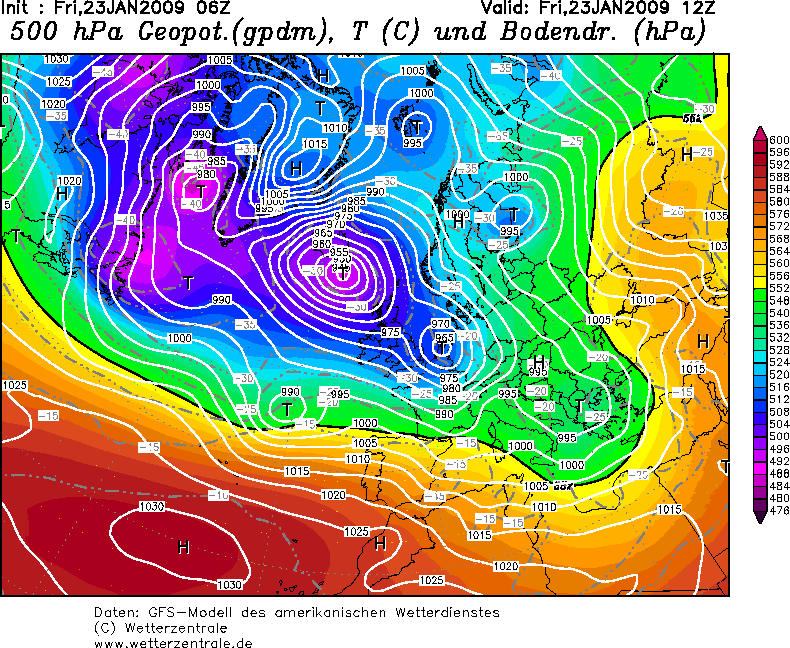Valid: Tue 28 Oct 2008 06:00 to Wed 29 Oct 2008 06:00 UTC
Issued: Tue 28 Oct 2008 03:58
Forecaster: VAN DER VELDE
SYNOPSIS
An elongated upper trough following a cold front becomes quasi stationary and stretches from Scandinavia to the Iberian Peninsula. Behind the cold front is a vast area of maritime showers, and thunder can occur particularly in regions of coastal convergence or small troughs. Late in the period a cut-off low of Arctic origin, with weak thermal gradients but significant pressure gradients, enters the northern North Sea, with associated showers and thunder.
On the warm side of the upper trough, as it enters the Mediterranean, a large area destabilizes and cyclogenesis occurs along the cold front east of Spain, in the jet entrance region.
DISCUSSION
...southern Italy, eastern Adriatic Se a...
More than 250 m2/s2 of SREH in an area with a large 1-3 MJ/m2 of vertically integrated CAPE (ICAPE) could yield multi- and supercellular storms, though deep layer shear vectors are not forecast to be as strong, 15 m/s. Large hail is likely, and 0-1 km shear >10 m/s suggests also tornados and waterspouts are possible. 00Z sounding of Cagliari shows good instability with low LFC in support of this. LAMMA NMM 12/8 km models show a concentration within the level 2 area.
Sicily may be partly capped according to GFS.
Additionally, flash floods may occur.
...Balearic Islands area...
A narrow and steep thermal gradient at the cold front is marked by CAPE and strong low level buoyancy on the warm side and 500 m2/s2 storm-relative helicity (0-3 km) and highly superadiabatic low level lapse rates on the cold side. With some slope of the frontal surface, storms may profit of the shear environment, enabling a threat of large hail and tornadoes/waterspouts when updraft rotation occurs. GFS 18Z is in favor of development of a frontal wave and this increases also the threats associated with high precipitation.
An earlier (afternoon) storm NE of the area will likely become an MCS and may have some wind and hail threat as well.
...English Channel region, southern North Sea...
A number of waterspouts are likely to occur, as strong 0-3 km buoyancy and boundary layer superadiabatic lapse rates allow for rapid upward acceleration, and weakening pressure gradients are in favor. Current 00Z soundings suggest air is relatively dry, though.
More information about the risk system can be found on the FAQ page.











